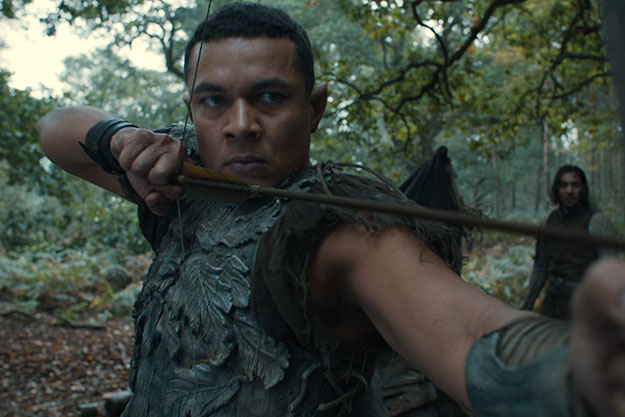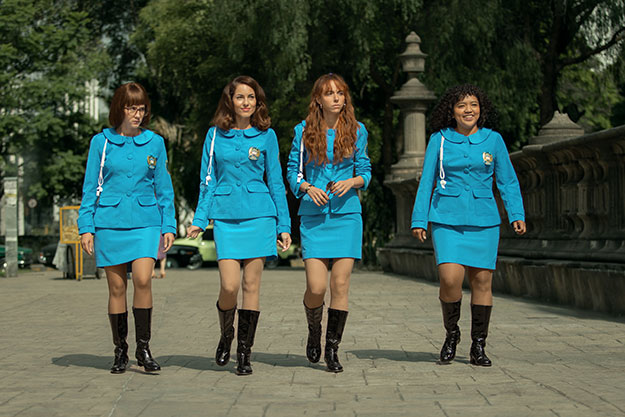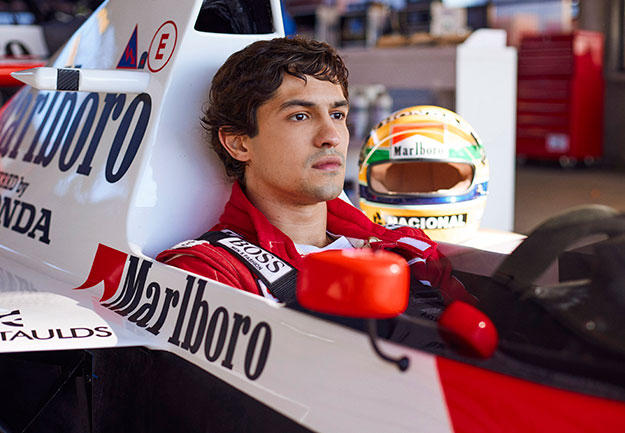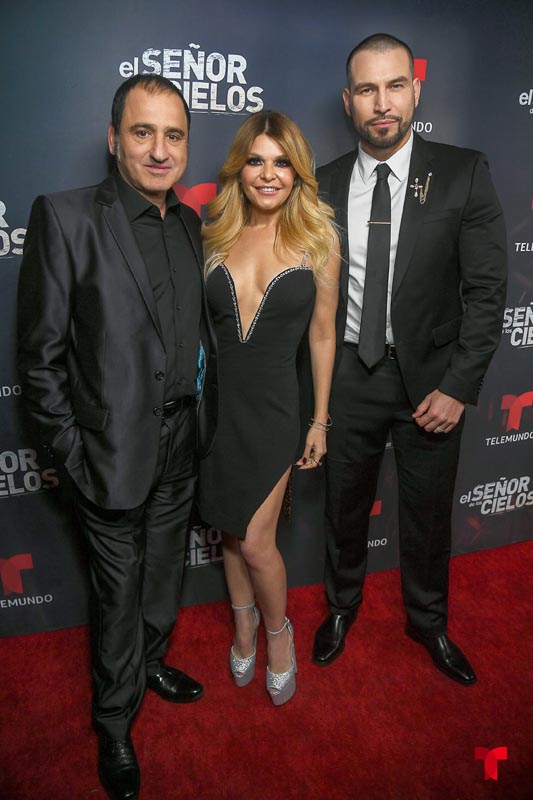Harrison Ford Stars Alongside CGI Dog in ‘The Call of the Wild’
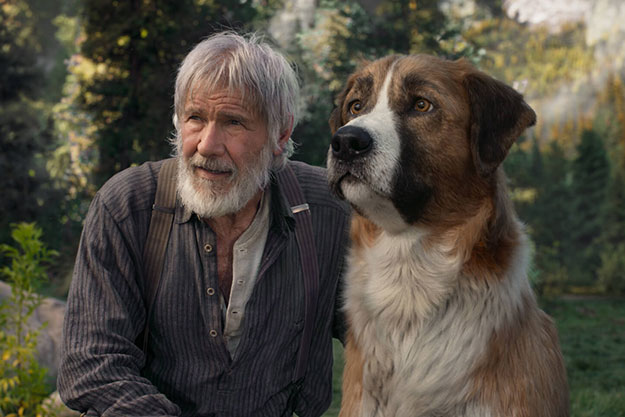
Jack London’s 1903 classic adventure novel, The Call of the Wild, which has been adapted into several films throughout the decades is the story of Buck, a St. Bernard/Scotch Collie mix breed dog, and his journey from domesticated to untamed animal living in the open wild. Buck, a spoiled Californian dog is dognapped from his happy home and sold and shipped off to the Yukon, where the 1890s Klondike Gold Rush created serious demand for big dogs capable of pulling sleds. Buck, after being abused and submitted from his captor, finds his place with a nice couple delivering mail until the telegraph eliminated the need for it and he again loses his way and is once again in danger of being abused but he’s eventually rescued by John Thornton played by Harrison Ford, who is trying to get away from his own emotional wounds. The two create a strong bond and become each other's transcendental and transformational push throughs.
Previous versions of the film employed a real dog but this time around the hero dog is not a real animal but rather a computerized CGI dog version whose movements and “acting” were the work of Terry Notary, a Cirque du Soleil performer who delivers an amazing motion-capture performance that was key while shooting with other actors as Harrison Ford who plays John Thorton. Ford talked to us at a recent press conference.
“He was convincingly playing a dog... I hadn’t imagined quite how it was going to work. It seemed a little weird but Terry Notary who stood in for the dog is an accomplished actor, and a gifted Cirque Du Soleil Gymnast. So he developed the skill to move like a dog and to help everyone organize their eyeline to where they were looking. And for me also, I had the opportunity to create an emotional relationship with the character that Terry Notary was playing. We crossed some biological lines... (laugh) it became second nature, it felt a little funny here at first, scratching him behind the ears (laugh) but he got over it...”
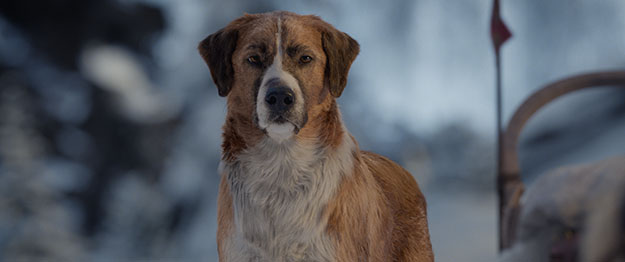
The story behind Buck’s model dog is as impressive and sweet as Buck’s character. Chris Sanders, the director, shared the story with us. He explained how difficult it was to find a dog that was that specific breed mix and he wanted to stay as true as possible to what the novel described Buck was.
“So every dog has a real life counterpart, Buck the lead dog. He was the only one that didn’t have. Because he’s a mix of two breeds St. Bernard, and a Farm Shepherd. We didn’t have one of those. And early on, we thought, well, what about a Bernese Mountain dog? They’re very dramatic. They’re very beautiful. They’re certainly very robust and stuff. And so that’s how we began. But even then we started with the Bernese Mountain dog as a model. We still wanted to build him from scratch. I wanted to build from scratch because I wanted to, I wanted him to have certain traits. That wasn’t working out. It was October, and we had a Bernese Mountain dog on set, his color reference. And anything that you see, if you look very carefully in Thornton’s cabin, on the back wall is a drawing of a Bernese Mountain dog, because that was the intent that he was catching Buck. But because those dogs are so predominantly black, I began to get really concerned about how many shots we have at night, and how well that dog would read. Then my wife in October, was looking through Petfinder. And she said you’ll never guess what. I found a dog that was found as a stray wandering the streets of Kansas, of Emporia, Kansas. And he’s the exact combination of breeds that Buck is. And the weird thing was he was listed on their website under the name Buckley. She said I’m going to go and she drove two days to Emporia, Kansas, she met Buckley, she bought him for $25. And he was on special because nobody was buying him. She drove back to set with Buckley, and she walked on the set with him and immediately I think everybody just said let’s make that be the dog. And she said, ‘Let’s reset let’s make that the dog.’ So we took Buckley to gentle giant and scanned him and he’s the lead and he lives with me, he is now our dog.”
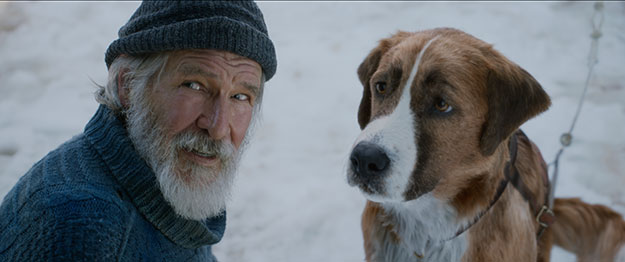
Even though the anthropomorphism of Buck was keen and emotionally grappling it’s CGI was quite distracting and lacking some real-life authenticity which a real canine would’ve brought to the film if one was used. Clearly a lot of work went into finding and scanning real dogs from every angle, and getting all their muscles, shape, movements and fur to look as real as possible but it seemed to have failed as the dog seemed very much synthetic and with unrealistic movements compared to the animals in many of Disney’s live-action and photorealistic movies done in the past.
The film directed by animation veteran Chris Sanders from Michael Green’s screenplay, took some liberties adapting the novel into a more contemporary version, watered down, taking out the racism and not showing violence directly. It succeeded in its recipe of intertwined soulful anthropomorphism and a “coming-of-age” fantastic journey of self discovery and courage to find your true place in the world.
Answer the The Call of the Wild, NOW PLAYING in theaters.

